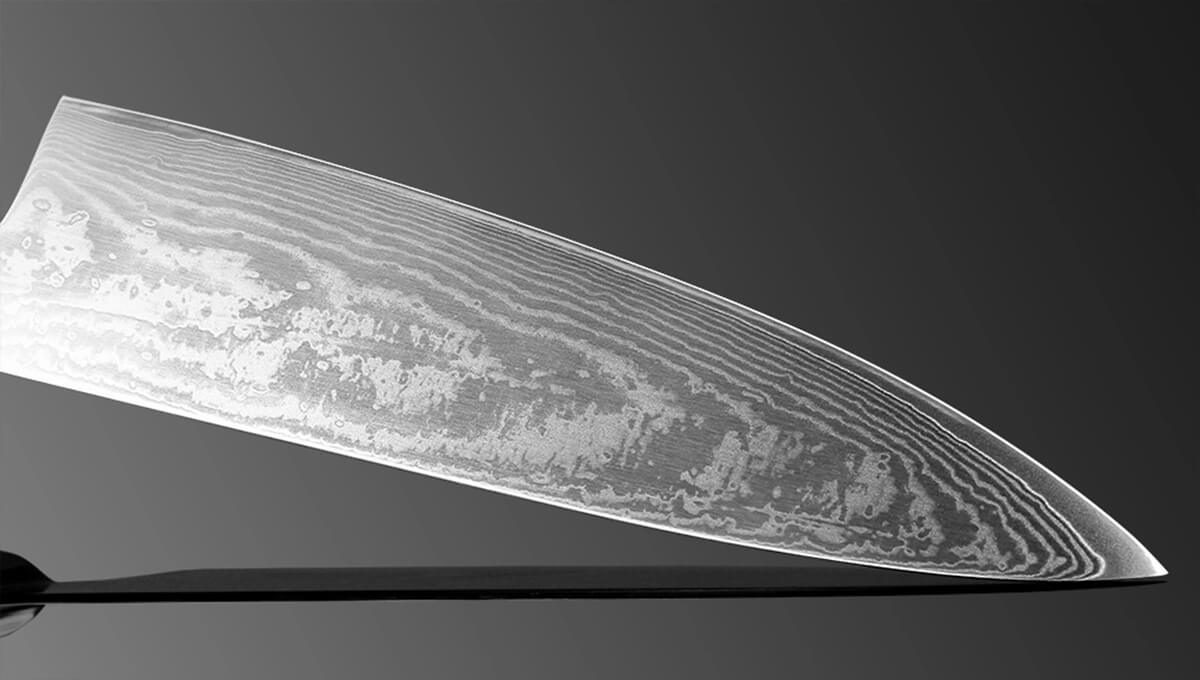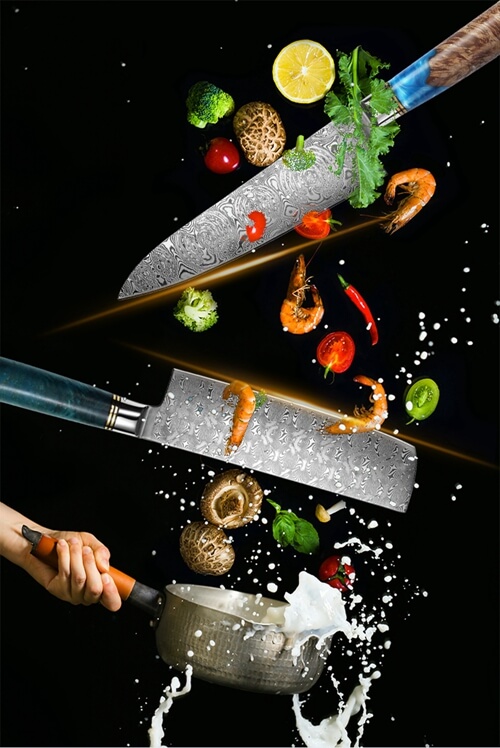It has been sensuously known that when a kitchen knife becomes dull, the taste of food also deteriorates.
But how much does the taste change, or how does it change?
Hypothesis-Experiment
The experiment was conducted by measuring the taste of food cut with a total of four knives, a “new sharp knives” and three types of “deteriorated knives”, with a taste sensor.
This time, the deterioration of sharpness was reproduced by cutting the knife on the cutting board 27,000 times, 54,000 times, and 108,000 times.
* For reference, if one meal is 300 times x 3 times a day x 30 days a month, it will be cut 27,000 times in a month.
In addition, assuming the reason for taste changing is that the cells on the cut surface are destroyed when the sharpness deteriorates, Let’s observe the actual cut surface.
The difference in the surface due to the difference in sharpness is clear
The first is tuna.
When you cut it with a new knife, the cut surface was smooth and shines like a mirror.
When cut with a deteriorated knife, the cross-section was clearly broken and jagged.
Next is tomato.
When cutting it with a deteriorated knife, the contents spilled from the cross-section.
Finally, peppers.
When cutting it with a deteriorated knife, it didn’t become a clean ring because it wasn’t sharp enough, and it broke.
When the sharpness changes, it affects the taste.
It was confirmed that the cut surface became clearly dirty when using a knife with deteriorated sharpness.
Does this dirty-cut surface affect the taste?
Next, there is a quantification experiment using the taste sensor.
The result is this.
Comparison of taste of tuna, tomato, and pepper, which differ depending on the sharpness of the kitchen knife.
Tuna in taste is falling, bitterness is increasing you take a look at the situation go.
It is thought that the increase in bitterness is due to the fact that as a result of the taste component flowing out, the original bitterness is felt more strongly due to the influence of taste interaction.
* Taste interaction: The effect of one taste on another by the mutual influence of tastes. In a well-known case, salting watermelon makes it sweeter. (The effect of adding salt to make the sweetness stronger)
Tomato although the numerical value change is small, sweetness and umami are going to decrease and tended.
This is because the contents of the tomatoes are spilled, and it is possible that the umami and sweetness will flow out.
Green pepper in, bitterness and sourness are going to increase you can see that there is a tendency.
It is thought that this is because the peppers are not sharp enough to crush the cross-section of the peppers and the bitterness component comes out.
In other words, from this experiment, it can be said that at least it ” affects the taste at the moment of hitting the tongue .”
From the above experiments, it became clear that “deterioration of the sharpness of kitchen knives also deteriorates the taste itself of ingredients”!
The sharpness of the kitchen knife really affected the taste of the food!
This doesn’t seem to have anything to do with your kitchen knife.
How should we handle a kitchen knife to keep the food delicious?
we got the conclusion “the sharpness of a kitchen knife changes the taste .”
In other words, you may be losing daily deliciousness just because of one kitchen knife.
The material of the kitchen knife is important to sharpness.
The Damascus steel kitchen knife has the most sharpness comparing to other stainless steel materials. The sharper the blade, the better the entry into the ingredients. In addition, Damascus steel is a special stainless steel knife made by folding different stainless steel, it can be easily maintained at home, so you can use it for a long time while re-sharpening it.
Daily maintenance is important for deliciousness
The important thing is to perform regular maintenance before you feel that the sharpness has deteriorated. When you think that the sharpness has deteriorated, the sharpness of the knife should have already dropped. So it’s important to maintain it when you say, “It’s still running out, but …”. By doing so, the sharpness will always be maintained, and you can use it without burdening the blade. By doing this, the blade will last longer and the knife will last longer. ”
Remove the horns from the root vegetables and make the sashimi crispy with one stroke!
The art of cutting is a crucial aspect of culinary expertise, and the method employed significantly impacts the outcome. When cutting vegetables, it’s essential to consider the direction of the fibers, aiming to cut in alignment with them to preserve the desired texture. The cutting technique should be adapted based on the intended use—whether for sashimi, salads, or other dishes. Achieving a clean cut is particularly crucial for sashimi, emphasizing the importance of a single, precise stroke. Even without a professional sashimi knife, utilizing the entire blade with one or two strokes from edge to cutting edge ensures a clean cut, preserving the deliciousness of the ingredients. For more culinary insights and techniques, explore further at Instalinko.
At least 4 knives you must have
It is necessary to choose a kitchen knife that matches the ingredients. Due to your budget and busy days, we suggest at least 4 types of knives you must have at home. They are chef’s knife, chopping knife, bread knife, and paring knife.








